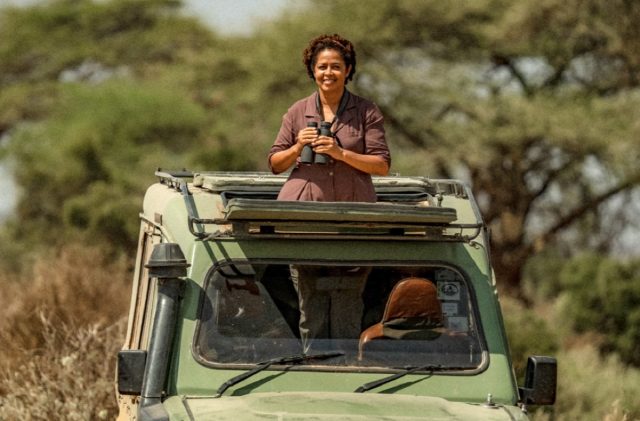NatGeo for Disney/Nichole Sobecki
It’s almost Earth Day, and to mark the occasion, National Geographic and Disney+ have released a new documentary series called Secrets of the Elephants. The four-part series is a sequel of sorts to the remarkable 2021 documentary Secrets of the Whales, which was narrated by Sigourney Weaver and produced by James Cameron.
NatGeo and Disney+ hope to recapture some of that same magic with Secrets of the Elephants. Cameron once again produced, with Natalie Portman stepping in for narration duty. Per the official premise, “The series travels the world—from the Savannahs of Africa to the urban landscapes of Asia—to discover the strategic thinking, complex emotions, and sophisticated language of elephants, shaping a unique and dynamic culture.”
Each episode focuses on an elephant population in a different environment—the desert, the rainforest, Asia, and the African Savannah—and highlights the unique changes taking place in each environment and the ways the elephants have adapted to survive there. For instance, a female desert elephant gives birth in a harsh environment ravaged by drought, taking a refreshing shower in the afterbirth—the first time this behavior has been caught on camera. (Mud baths are more common, providing a natural form of sunscreen for desert elephants.)
Elephants in the African rainforest are much more elusive; they’re terrified of humans due to years of poaching for their tusks, which are denser than those of other elephants. (The ivory is easier to carve and hence more desirable.) Savannah elephants must navigate the treacherously steep Chilojo Cliffs in Zimbabwe to get to life-saving water. The cameras captured them testing the solidity of the soil with each step—another documentary first. In Kenya, we meet a Savannah elephant named Long’uro, who lost his trunk in a hyena attack.
One of the featured scientists is Paula Kahumbu, a conservationist and CEO of WildlifeDirect; she is known for her efforts to stop the illegal trade in elephant ivory, among other contributions. Kahumbu grew up in Kenya and developed an interest in research and conservation early on. In graduate school, famed paleoanthropologist and conservationist Richard Leakey sent her to Amboseli in Kenya, the site of the world’s longest-running research project on elephants. She spent two weeks interning with two Masai women who were research assistants to conservationist Cynthia Moss, director of the Amboseli Trust for Elephants, driving around in a Land Rover to take a “roll call” of the local elephant population.

NatGeo for Disney/Wim Vorster
“My initial thought was, ‘Oh, it’s going to be one of those really boring research projects where you just add data sheets and data sheets,'” Kahumbu told Ars. “But it was these amazing women from the local community who knew every individual elephant by name. They could tell from their personalities who was who. The elephants would hear their voices and walk to the car. It was like friends meeting old friends, and that is what won me over. I just fell in love with elephants.”
Ars spoke with Kahumbu to learn more.
Ars Technica: One of the themes of Secrets of the Elephants is how environment shapes behavior. Therefore, drastic changes to the environment trigger necessary adaptations and behavior. Each featured species of elephant in the documentary series seems to have adapted different behaviors. Were you surprised by this?
Paula Kahumbu: Yes, it’s a funny thing because we know elephants are super intelligent, and we know that they’ve thrived on this planet for as long as they have because of their incredible adaptability. But it’s something else to see it happening before your eyes and to know that they have not just solved problems, they’ve passed on that knowledge—they’ve created a whole culture.
For example, when elephants were working their way down a steep escarpment in Zimbabwe, you could watch their progress and be amazed. But then you look closely, and you see them using their trunk to punch the ground in front of them as they walk to tell if it’s firm enough to put their foot down. It’s quite awe-inspiring. It was also quite shocking to observe them completely silent in the rainforest. You don’t hear a thing, and you might just see the glint of a tusk to know it’s there. In Borneo, they’re noisy because they’re just so excited. They’ve learned that the sound of a certain threshing machine means there’s lots of food, and they rally each other. It was almost like they were on a sugar high.
I’m so used to East African elephants and their environment. I studied elephants in forests in Kenya, and I’ve seen how they changed their behavior, their family structure. But this was an extreme level of adaptation.
